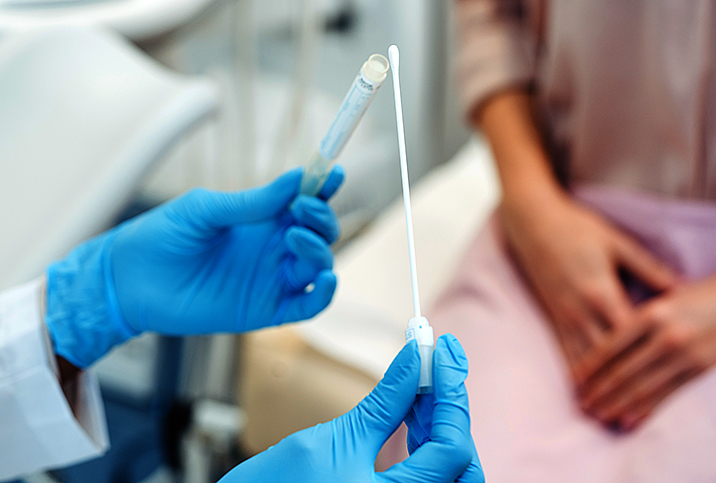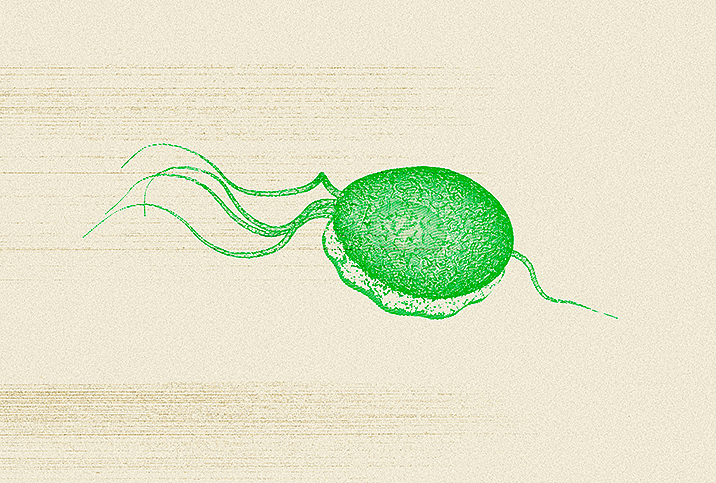Detecting an STI With No Symptoms

If you were among the "lucky" students to take sex ed in school, you might remember horror stories about sexually transmitted diseases (STDs). In an attempt to scare us into abstinence or sexual responsibility, teachers often highlighted nightmarish pictures of warts, rashes and even disfigurement. But the end result of these harsh images may have led to a false narrative.
While those drastic cases do exist, the majority of sexually transmitted infections (STIs) don't resemble those scary slides we endured in the classroom. Often, symptoms of STIs are not visible for years or are way more subtle than what we were taught to look for.
In many ways, focusing only on the worst and most visible symptoms can lure us into a false sense of security.
Invisible but present
A 2018 study published in Clinical Infectious Diseases indicated the majority of STIs may, in some conditions, be asymptomatic. In the study, 79 of the 174 patients who were screened for STIs—most of them, 87.4 percent, being men who had sex with men—tested positive for some form of infection, most commonly chlamydia, gonorrhea or syphilis. Of that 79, two-thirds were asymptomatic.
Those cases may well have gone unnoticed and untreated had there been no proactive screening. Worth noting is that higher-risk sexual behaviors, such as drug use and not using condoms, were positively correlated with a positive screening result.
But the answer may not be as simple as getting screened as soon as possible, especially as an STI can go undetected in premature testing.
Every STI possesses a unique incubation period—the amount of time your body requires to notice and respond to the parasite, bacteria or virus. For example, symptoms of chlamydia usually appear one to three weeks after sex with an infected person. Genital warts, on the other hand, may appear as soon as three weeks after the inciting encounter or take anywhere from months to a year to show visible signs of being present.
Proactive testing is key to prevention
The fact that so many STIs are either asymptomatic or take a long time to present makes regular screenings all the more imperative. Think of proactive screenings as doing your sexual civic duty, with the added bonus of knowing whether or not you're carrying an asymptomatic STI.
You can be tested according to a regular schedule—some physicians recommend every few months— or whenever you have a new partner. For STIs known to evade screening, such as certain strains of HPV, talk to your doctor about the different detection methods available.
For instance, a 2008 study of sexually active men who had sex with men, conducted by the Fenway Institute, found nucleic acid amplification tests (NAATs) revealed cases of infection that might have gone undetected in traditional tests. NAATs are a more sensitive form of testing, which may lead to a higher frequency of false positives, so the best way to detect asymptomatic STIs isn't just through NAATs but by a complement of multiple tests.
Think of proactive screenings as doing your sexual civic duty, with the added bonus of knowing whether or not you're carrying an asymptomatic STI.
Asymptomatic genital herpes, HIV and syphilis require blood tests, while gonorrhea and chlamydia are best detected through a swab or urine sample. Doctors typically also visually check a patient's genitals and may apply a vinegar solution to highlight non-raised warts. Unsurprisingly, this simple test is not foolproof.
Keep a mental checklist of what types of samples you've provided lately, since a urine sample won't identify the same infections as a blood sample, and vice versa. Women have the added responsibility of completing regular Pap smears, which are essential to identify HPV—the U.S. Preventive Services Task Force generally recommends women undergo this exam every three years starting at age 21. However, there is as yet no test for HPV in men that's been approved by the Centers for Disease Control and Prevention (CDC).
Acknowledge the subtlety
Other than regular testing, the best way to detect an asymptomatic STI is to acknowledge how symptoms may in fact be far more subtle than what we've been taught to expect. What appears to be harmless spotting between menstrual cycles may be a result of chlamydia. Unusual discharge and vaginal itchiness can be presumed to be a yeast infection when it's actually HPV. Low-grade, persistent genital pain or heaviness in the pelvis may not be cramps but chlamydia, gonorrhea or trichomoniasis.
Honesty is always the best policy, especially between you and your doctor, but also between you and yourself. If you've been disregarding what feels like a small symptom, stop procrastinating, go see your doctor and get tested.


















